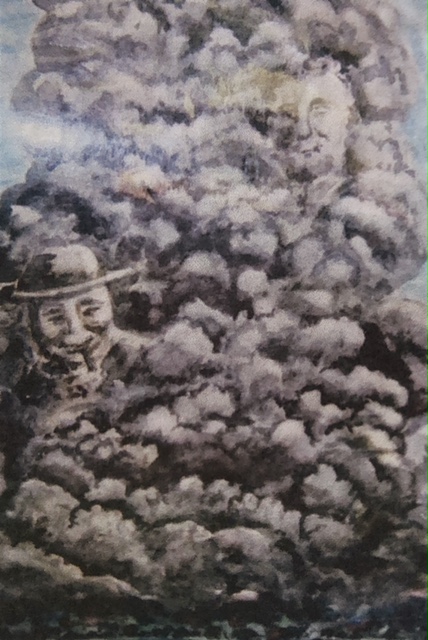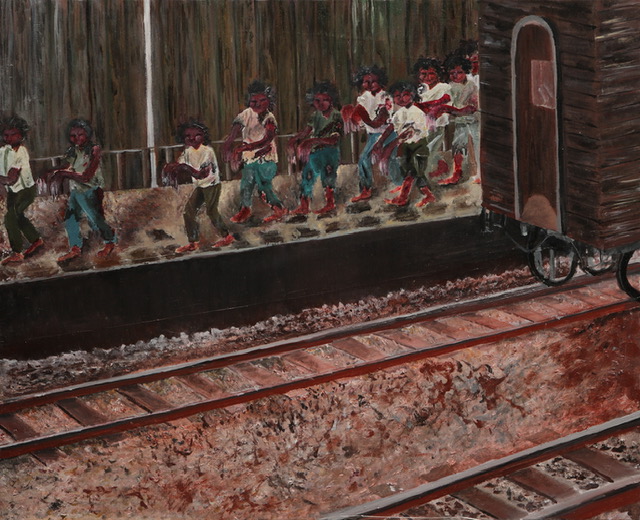Keisaburo Toyonaga
My Life Dedicated to A-bomb Survivors Overseas
2. My August 6
I had been troubled with an ear infection since I was very small, and I went to a clinic for acupuncture and moxibustion in Saka-cho (present Saka-cho, Aki-gun) every seven to ten days. On August 6, I was scheduled to go to the clinic. I left home early in the morning on that day, walked to Hiroshima Station and took the Kure Line to Saka Station. It was a little past eight when I arrived there. The clinic was a 30-minute walk from the station on the mountain side.
While walking, I suddenly heard a loud roaring sound from behind. Feeling frightened, I rushed to the space under the eaves of a house close by and crouched, quickly covering my eyes and ears with my hands, as we had been trained to do at school. Soon, I felt a blast of air, and a cloud of dust surrounded me; however, I didn’t have any injuries because Saka-cho was about 10km away from the hypocenter. People in Hiroshima called the A-bomb pika-don from its flash and sound. Where I was, I heard the sound but didn’t see any flash.
After the dust settled, I went to the clinic. People there were saying that a big bomb seemed to have been dropped on Hiroshima, which made me worried about my family in Hiroshima. Skipping my ear treatment, I rushed back to Saka Station. I waited for a train to Hiroshima, but no train came. While I was waiting, I saw a massive cloud rising high above Hiroshima City beyond the sea. In that cloud, I saw the faces of U.S. President Roosevelt and British Prime Minister Churchill. Although I was just a third grader, too young to know the faces of Roosevelt and Churchill, I saw their faces. In those days, even small children knew the words such as “Western brutality” and “Destruction of the West,” due to the thorough militaristic education at school. I can still sing a parody song widely sung those days: Roosevelt and Churchill were crying in the forest. Seeing them crying, Tojo laughed out loud.

I waited for a train to go back to Hiroshima at the station for many hours. I don’t know the exact time, but probably it was in the afternoon that the first train came. But it was not for Hiroshima but from Hiroshima, arriving on the other side of the platform from where I was standing. Seeing the people getting off the train, I was stunned. Their faces were black. People were stretching out their hands in front of them, and skin was dangling from their fingertips. Their hair was frizzy. I couldn’t tell whether they were male or female. It looked as if ghosts were silently getting off the train, and a lot of similar people were still on the train. Seeing them, I was frightened and became more and more anxious about my family.
After a long time, a train for Hiroshima finally came. I jumped on it, but it came to a sudden stop at Kaitaichi Station on the way to Hiroshima. I had no choice but to get off the train following other passengers. When I looked towards Hiroshima, I saw the city going up in flames. I was at a loss what to do next.

I suddenly remembered that my mother’s parents lived in Funakoshi-cho (present Funakoshi, Aki-ku, about 6.5km from the hypocenter) 15 or 20 minutes away from the station. Arriving at their house, I called to my grandfather, “Grandpa! Take me to Hiroshima, and let’s search for my mother together!” But my grandfather said, “I’m sorry, but it’s impossible. Look at the city. It’s in flames. You should stay here.” I stayed there that night, but I was so worried about my mother and my brother that I couldn’t sleep.